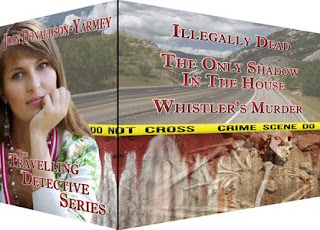The wonderful thing about
writing science fiction heroines, is that they can truly be whatever I want
them to be. They don’t even need to be human. They take charge and operate
beyond petty gender discrimination, wielding the power of true freedom...
unless, of course, I blast an alien grenade into their sophisticated advanced
society. That’s always fun to do. After all, without conflict, there would be
no story.
But not all futuristic
societies are advanced. Sometimes civilization goes backward, my heroine is
whisked into a parallel universe (SNATCHED), alien intervention or human
warfare destroys dreams of freedom. Then my heroines must restore balance to
their world.
Sometimes they are hard core
military by choice, like Tia in Anaz-voohri or Zania in Snatched. Sometimes I
like to throw them into the fray against their will and watch them flounder and
cope, as I imagine the worst possible situations to defeat them. Of course,
among all these great qualities of strength and courage, they also have flaws
and weaknesses. They usually perform well under pressure... until I find their
breaking point. Even then, I still want to be them.
I love my kick-butt heroines.
Whether they wield a sword, a blaster, or a bazooka, like in the ANCIENT ENEMY
series, they confront their fears with courage, and after much suffering, they
usually save the day... or the man they love, like in ALIEN LOCKDOWN.
Fiction reveals the writer’s
soul. We usually write about what we know. Like my futuristic heroines, I’m a
meditator, a fighter, a former gymnast, a skydiver, and a Martial Arts black
belt (Aikido). I love Japanese swords and learned how to use them. I believe
that even in future warfare, there will be a place for sharp blades. If an EMP
(electromagnetic pulse) or a solar flare renders all electronics useless, say
goodbye to your fancy weaponry. My heroines can still rely on a length of good
steel.
No sniggering, erotica
readers. The blade is meant to slay whatever soldier, tiger, or alien demon
wants to ruin the day. Of course, there are sizzling love scenes in my books as
well. My heroines do deserve their rewards. But I prefer to avoid dubious
metaphors.
You can find all my titles in
eBooks mostly everywhere in most formats. I also have a few available in print.
Some are out of print and only available used. More print books are coming out
soon. Find my titles on: AMAZON - Barnes& Noble – Smashwords – All Romance eBooks
KICKING
BOTS - Ancient Enemy Book Three
Dr.
Melissa Campbell, head researcher at the San Francisco Center for Disease
Control, asks an eminent colleague for help to protect her precious vaccine,
one that could end the deadly alien plague. She didn't expect to get a crazy
renegade like Bennett Sevastian for a bodyguard. She hates military types, and this
genetically enhanced super-soldier is pure testosterone, hot-headed,
quick-tempered, impulsive, impatient, and downright impossible. But these are
dangerous times with riots in the streets, and rumors of alien invasion. In a
breathless race against time, experience the decisive battle for humankind, one
that will decide whether Earth belongs to humanity, or to a powerful alien
race...
“As
always, Ms. Schartz's dialogue is believable and authentic and her characters
hero-worthy. I loved Melissa's smarts, compassion, and daring... a veritable
thrill-ride, with some twists and turns... exciting, suspense… an unpredictable
path that so engrossed me, I found it hard to put the book down. Great ending
to a great series!" Two Lips Reviews.
Vijaya Schartz
Blasters, Swords, Romance
with a Kick











.jpg)







.jpg)

.jpg)




